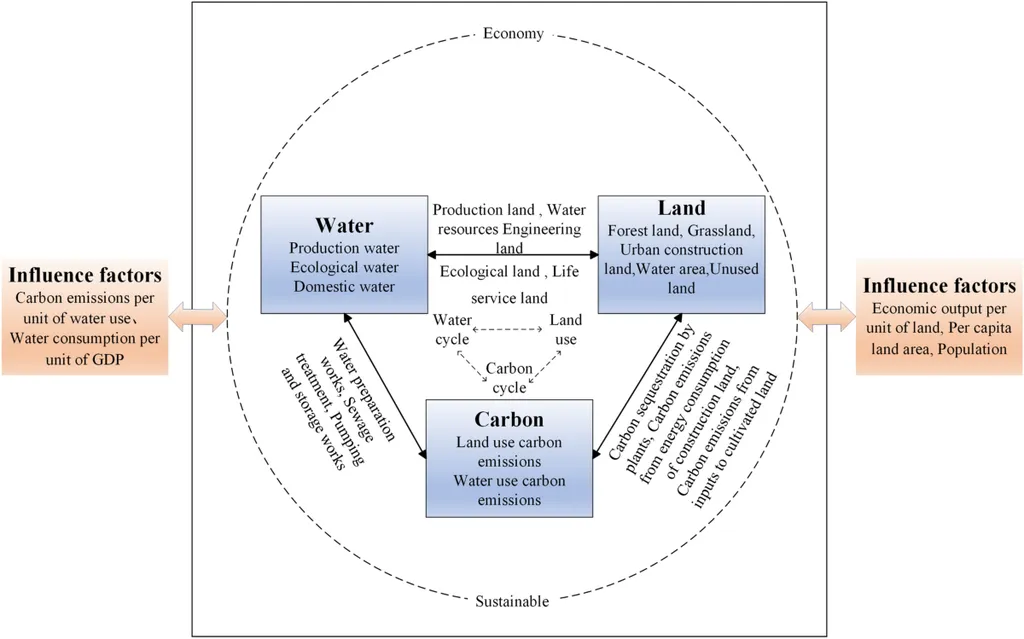In the quest to balance economic growth with environmental sustainability, a groundbreaking study has emerged from the School of Economics and Management at Anhui University of Science and Technology. Led by Qingzhen Shao, the research delves into the intricate relationship between water, land, and carbon emissions, offering a nuanced perspective on how these elements interact within Shandong Province. Published in the journal ‘Carbon Balance and Management’ (translated from Chinese as ‘碳平衡与管理’), this study provides a comprehensive analysis that could reshape how industries approach carbon reduction strategies.
The study’s significance lies in its holistic approach to understanding carbon emissions. By examining land use and total carbon emissions, Shao and his team constructed several key indicators: the carbon emission economic contribution coefficient (EC), carbon water coefficient (CWC), carbon emission intensity (CI), and coefficient of variation (CV). These metrics offer a detailed snapshot of the spatio-temporal distribution of carbon emissions, revealing patterns that could inform future policy and industrial practices.
One of the most compelling findings is the variation in carbon emissions across different economic circles within Shandong Province. The Provincial Capital Economic Circle (PEC) stands out with higher land use and total carbon emissions compared to the Jiaodong Economic Circle (JEC) and Lunan Economic Circle (LEC). “This disparity highlights the need for tailored strategies in different regions,” Shao notes. “For instance, PEC might benefit from a focus on industrial structure adjustment and renewable energy development, while JEC could prioritize water-saving technologies.”
The study also uncovers the dynamic nature of carbon emissions distribution. The center of gravity-standard deviation ellipse method reveals that land use carbon emissions generally move from northeast to southwest, with a migration track from northwest to northeast to southwest. Total carbon emissions, on the other hand, shift from a northeast-southwest distribution to a southeast-northwest pattern, with a shifting track towards the east-southwest. These findings underscore the importance of regional-specific approaches to carbon management.
Shao’s research also identifies key factors influencing carbon emissions. The carbon emission efficiency effect, land economy effect, and population effect are found to promote carbon emissions, while water use intensity effect and per capita land use effect inhibit them. “Understanding these factors is crucial for developing effective carbon reduction strategies,” Shao explains. “For example, optimizing land efficiency and promoting low-carbon agriculture could significantly impact carbon emissions in regions like LEC.”
The implications of this research extend beyond Shandong Province, offering valuable insights for the broader energy sector. As industries strive to meet “dual carbon goals”—reducing both carbon emissions and achieving carbon neutrality—the findings from this study provide a practical basis for urban collaborative carbon reduction. By leveraging the water-land-carbon linkage, industries can develop more effective and sustainable strategies to mitigate carbon emissions.
In conclusion, Qingzhen Shao’s research represents a significant step forward in the field of carbon management. By providing a detailed analysis of the spatio-temporal characteristics and influencing factors of carbon emissions, this study offers a roadmap for industries and policymakers to navigate the complex landscape of carbon reduction. As the energy sector continues to evolve, the insights from this research will undoubtedly shape future developments, paving the way for a more sustainable and environmentally conscious future.

